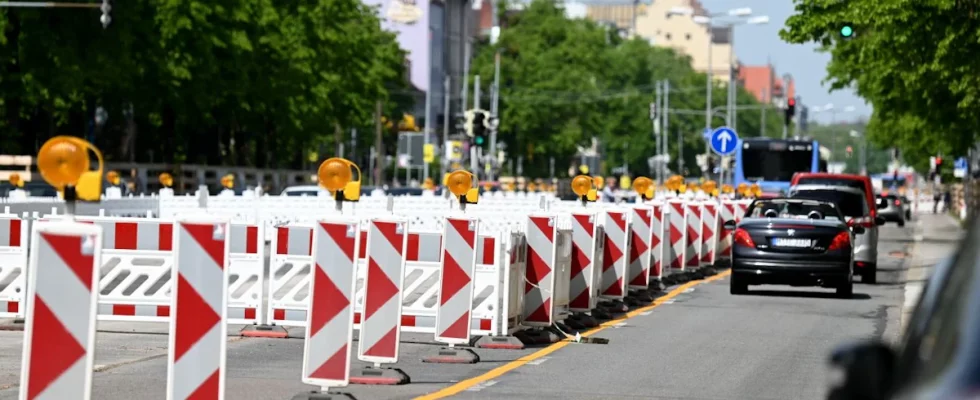The start of construction on the tram west tangent in the Laim construction section is imminent. This is reported by the Munich Transport Company (MVG). The fears of residents and opponents of the route and what the MVG has already announced in information events are now coming true: With the construction of the construction site, there will be significant restrictions on traffic on Fürstenrieder Straße from this Thursday. The performance of the transport axis in the Laim area is massively restricted until the first section between Agnes-Bernauer-Straße and Ammerseestraße is planned to go into operation at the end of 2025.
That means: traffic jam.
The lanes between Ammerseestrasse and Laimer Kreisel will be reduced in two phases by two lanes in each direction, so that ultimately only one lane in each direction remains. There are also fewer lanes available on Gotthardstrasse to the west and east of Fürstenrieder Strasse. On the bridge over the A 96 on Ammerseestrasse, there will soon be only two lanes available in each direction, one of which will serve as a left-turn lane onto the A 96. Turning right onto the A 96 is still guaranteed.
The performance of Fürstenrieder Straße is then reduced by around 70 percent. The MVG warns that it is no longer suitable as a north-south axis for through traffic in the west of Munich during the construction period. This also has significant impacts on traffic on Autobahn 96 and on the Middle Ring West.
The inflow to Fürstenrieder Straße is controlled through several measures. Among other things, traffic coming from Wotanstrasse will only be routed into Fürstenrieder Strasse in one lane. Coming from Landsberger Straße out of the city, it is no longer possible to turn left onto Fürstenrieder Straße. It is possible to turn further into the city, but this is limited by reduced green time. Special short-term parking zones will be set up on Fürstenrieder Straße for delivery traffic.
As soon as supply lines are laid on the outside of the street, probably in mid-2024, the construction areas will partially extend up to the buildings, especially in the section between Gotthardstrasse and Agnes-Bernauer-Strasse, which is why parking spaces will no longer be necessary. The MVG promises that entrances and driveways will always remain open, as will the escape routes. The routing of pedestrian and cycle paths will continue to change.
At the beginning of 2025, work will follow in the southern area of Fürstenrieder Straße in Sendling-Westpark/Hadern. The bridge over the A 96 is scheduled to be completed by the end of 2027. Further information about the tram west tangent and an overview of current restrictions can be found at westtangente.mvg.de.
The connection should be completed by the end of 2028
Provided there are no further delays, the 8.3 kilometer long tram west tangent is scheduled to connect Romanplatz in Neuhausen with Aidenbachstrasse in Obersendling from the end of 2028. Construction will take place in different phases: The Agnes-Bernauer-Straße to Ammerseestraße section is scheduled to go into operation at the end of 2025, followed by the section between Ammerseestraße and Ratzingerplatz by the end of 2027. Finally, there are the sections from Romanplatz to Agnes-Bernauer-Straße and Ratzingerplatz to Aidenbachstraße, which should be accessible from December 2028.
Because Deutsche Bahn is taking longer to build the so-called environmental composite tube at the Laimer underpass, the date for commissioning, which was once scheduled for 2026, has been postponed again. However, the prerequisite for completion in 2028 is that the planned new construction of the motorway bridge over the A 96 and the Kreuzhof bridges on the A 95 are completed on time. Preparatory measures have already begun in Neuhausen and Laim.
Opponents of the western bypass regularly publicly doubt the economic viability of the route. The MVG counters this by saying that the route is a central infrastructure project to improve mobility in Munich. In the so-called standardized assessment, which is crucial for financial support from the federal government, the new line achieves a benefit-cost ratio with a clear benefit surplus with the preliminary assessment result of 1.78. Money from the federal government is available from a factor of 1.0.

